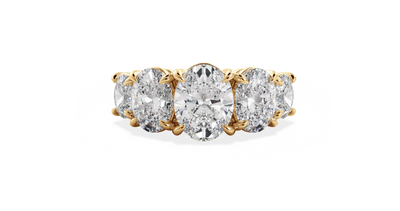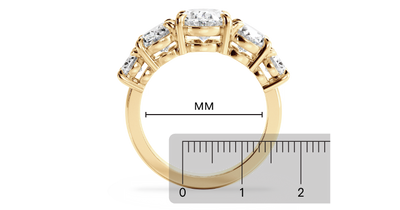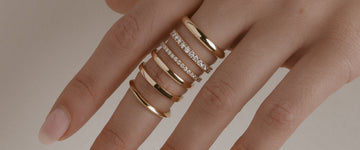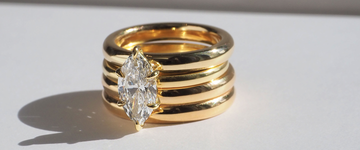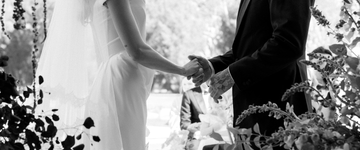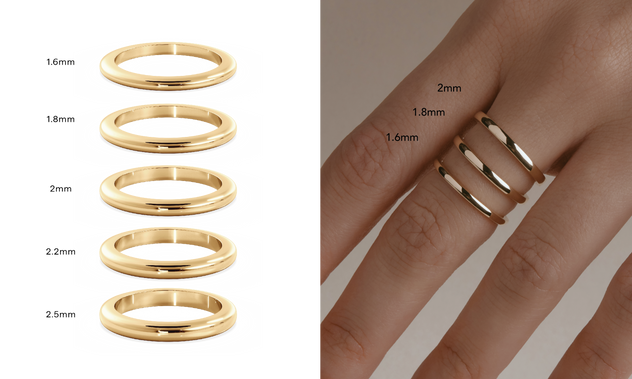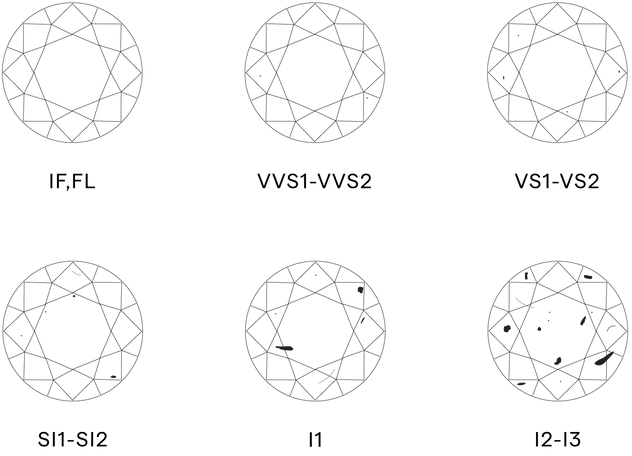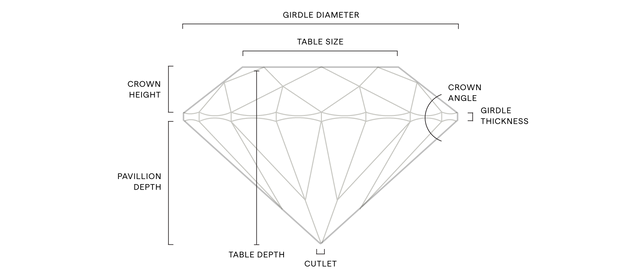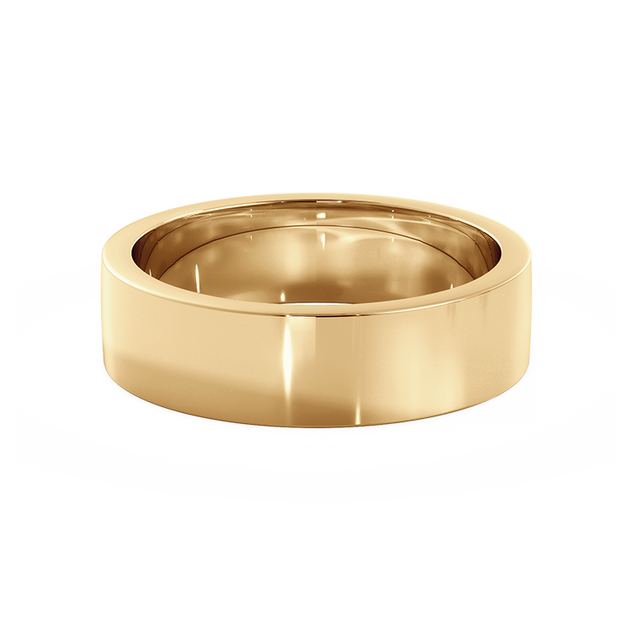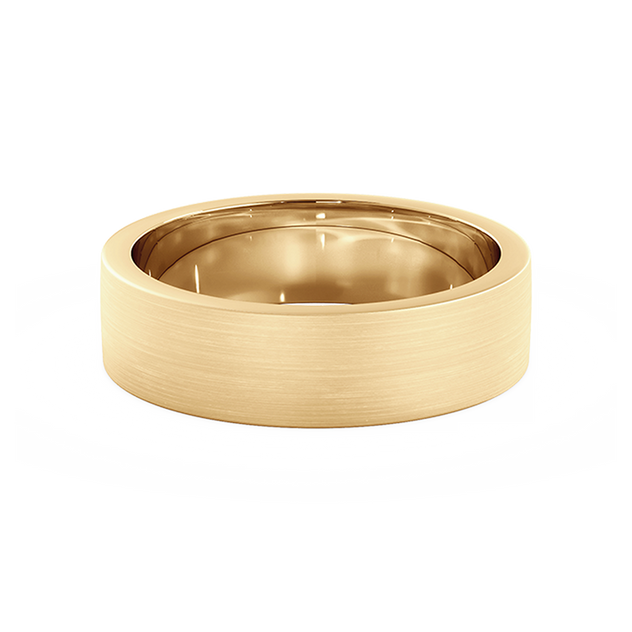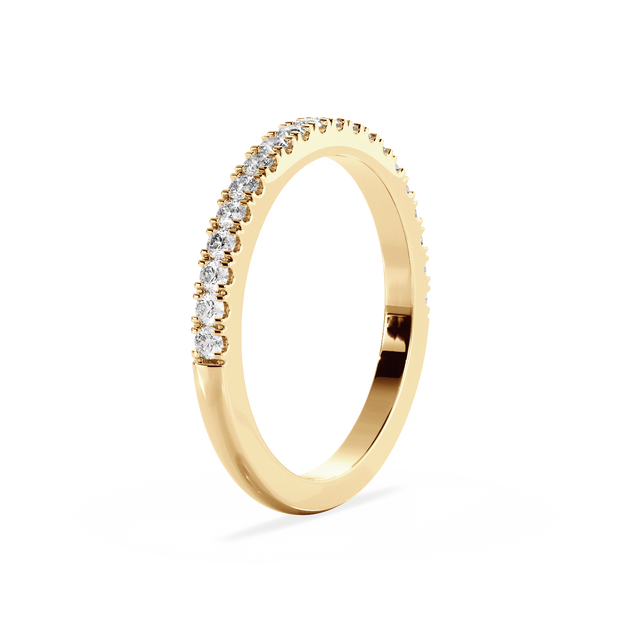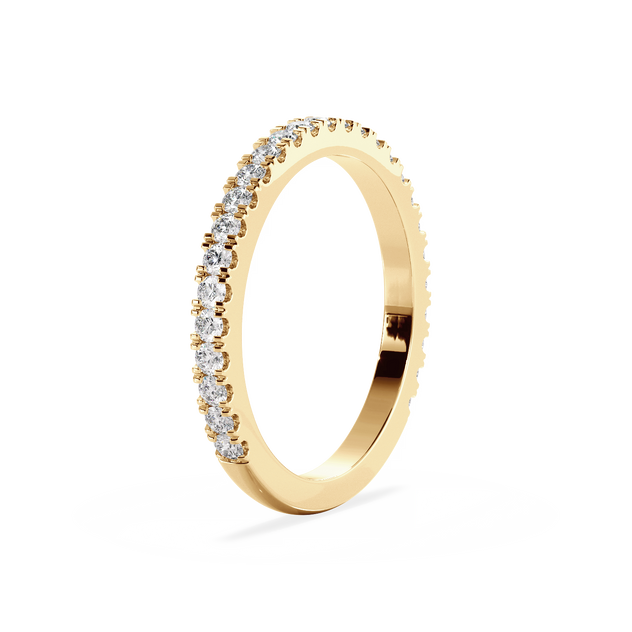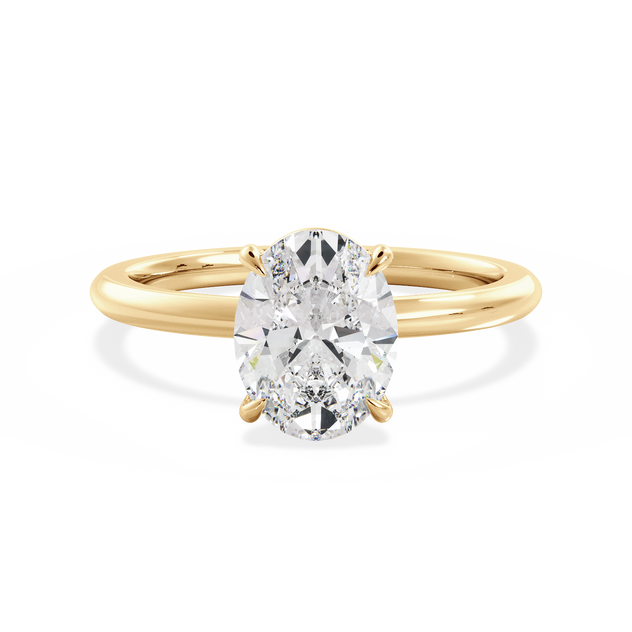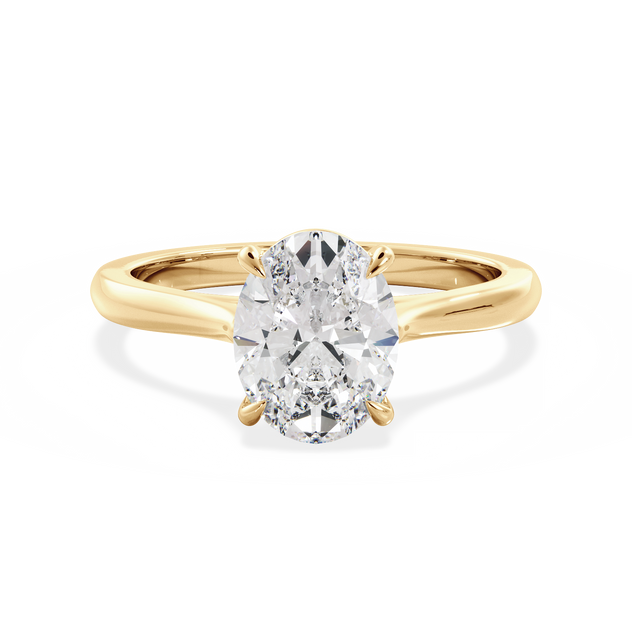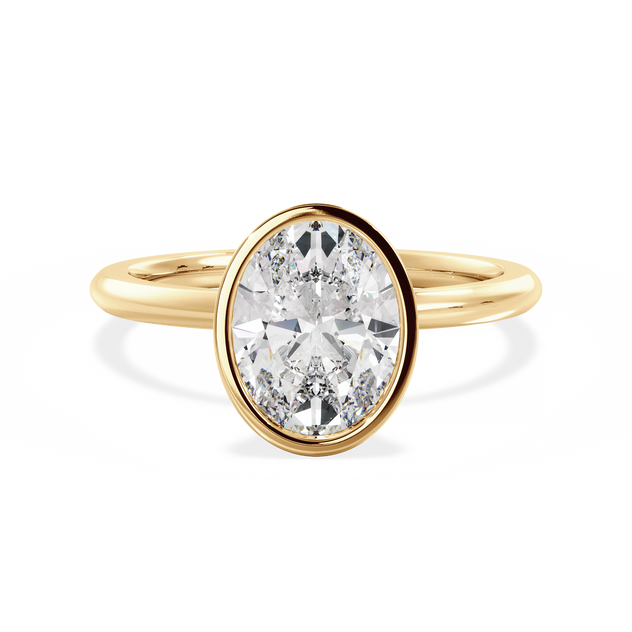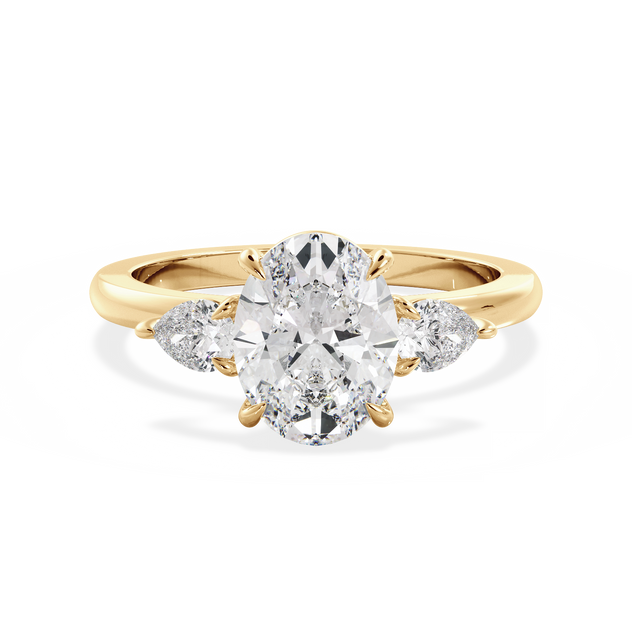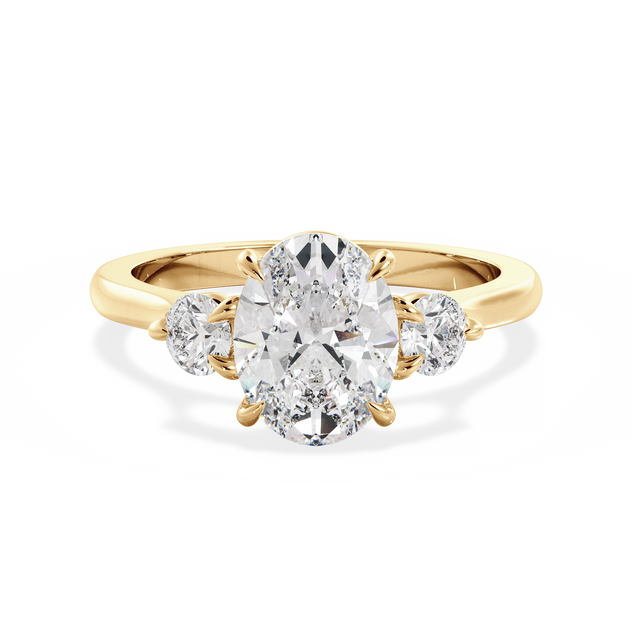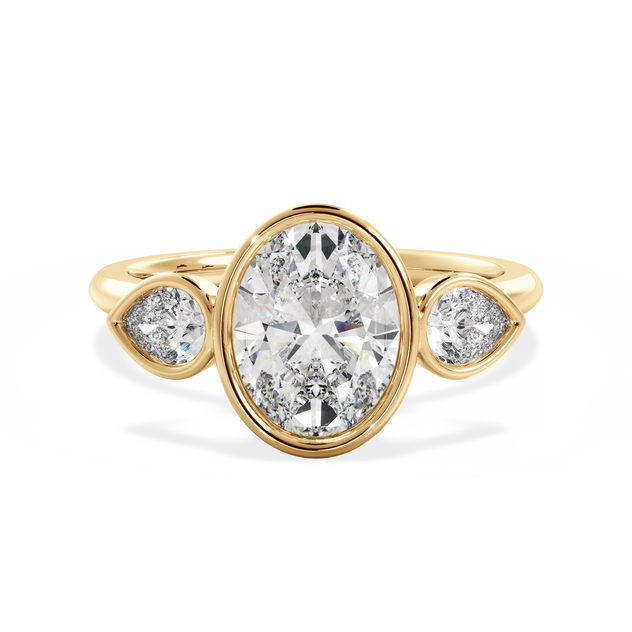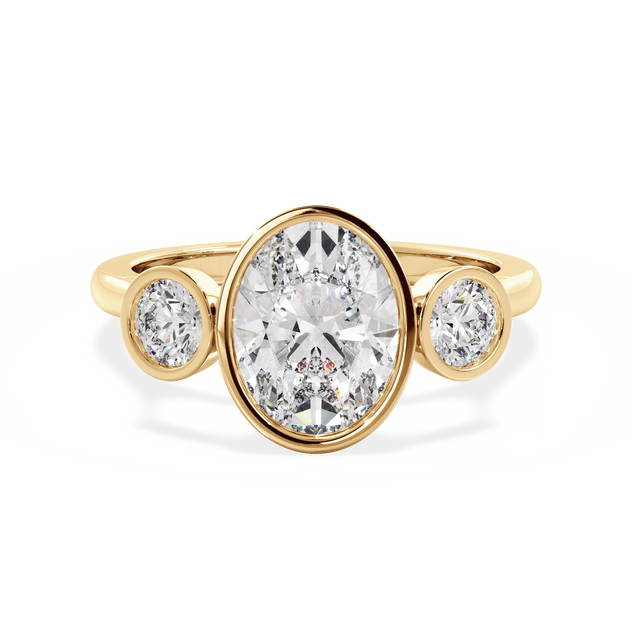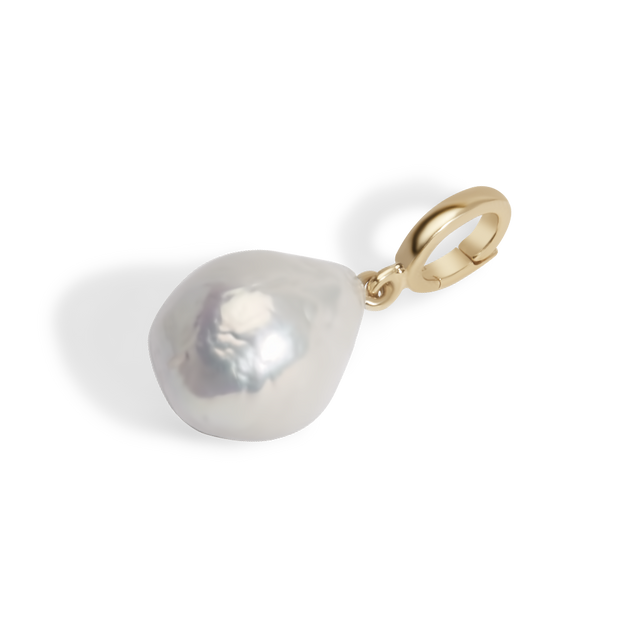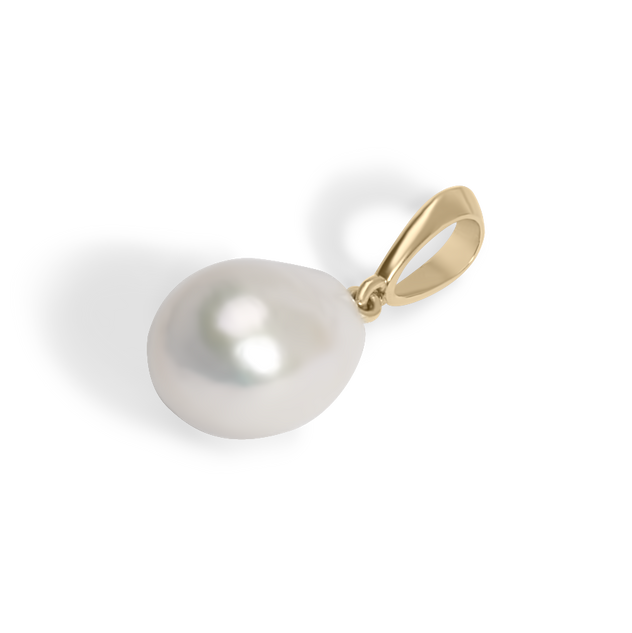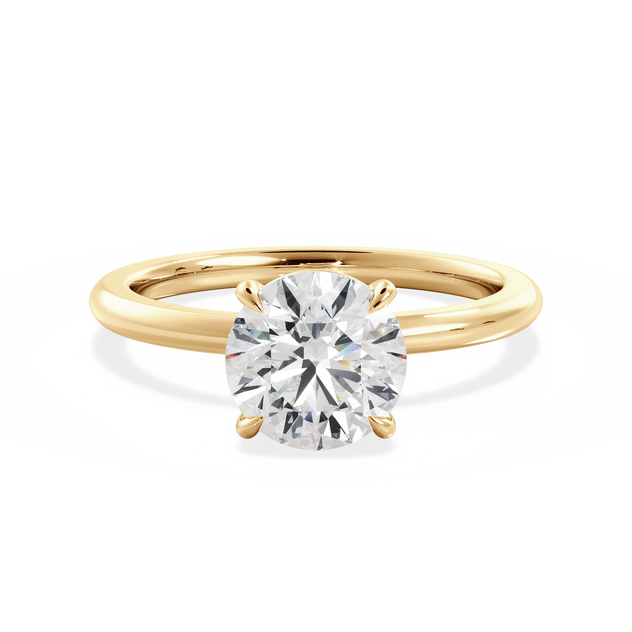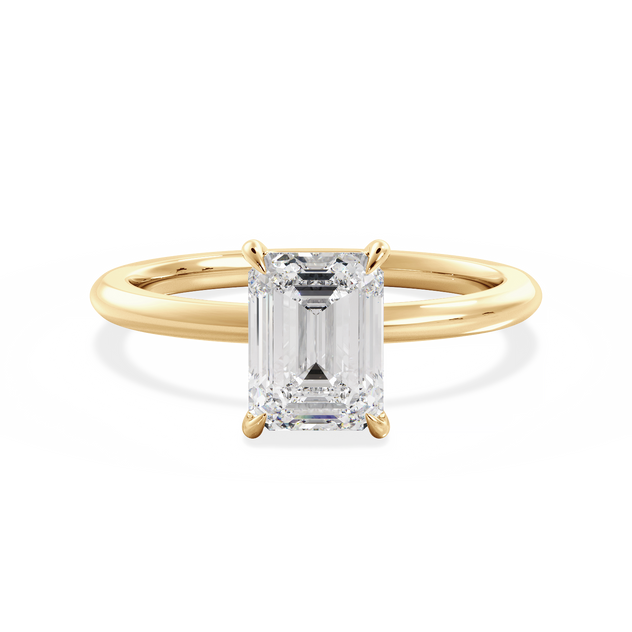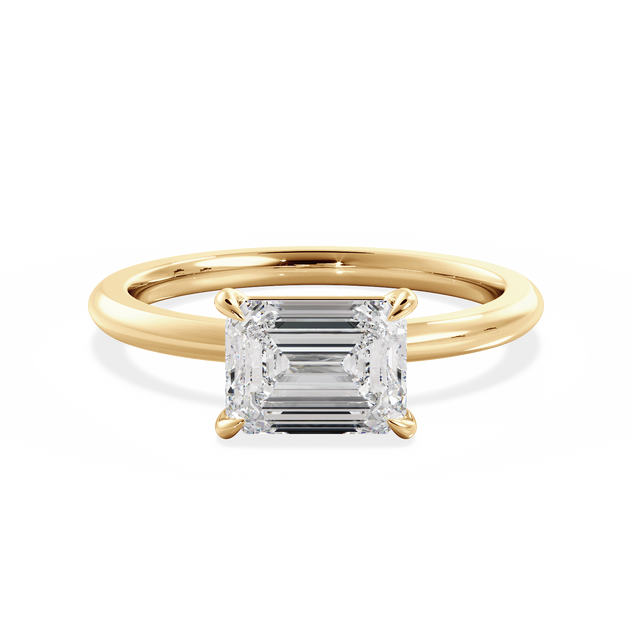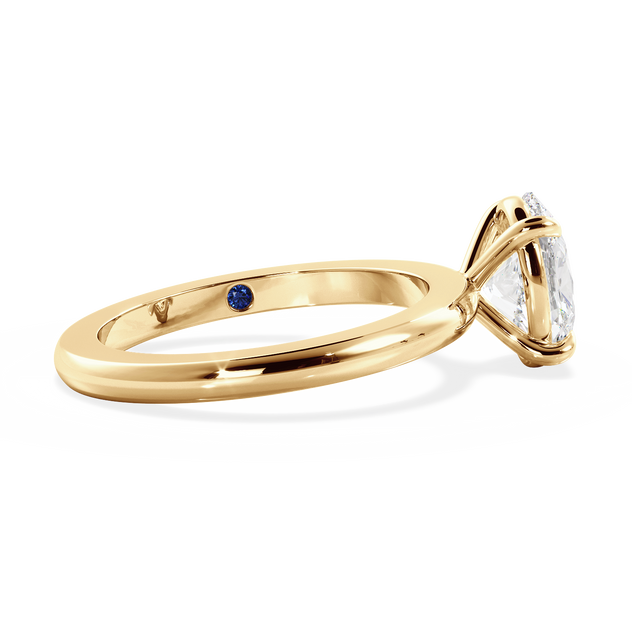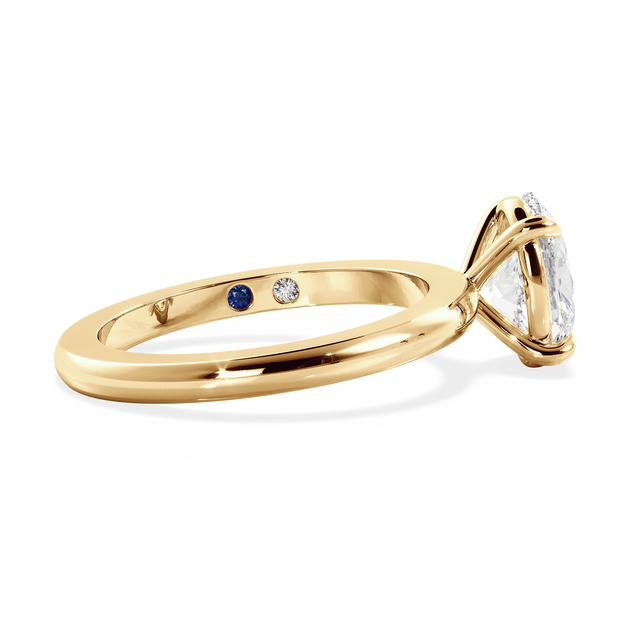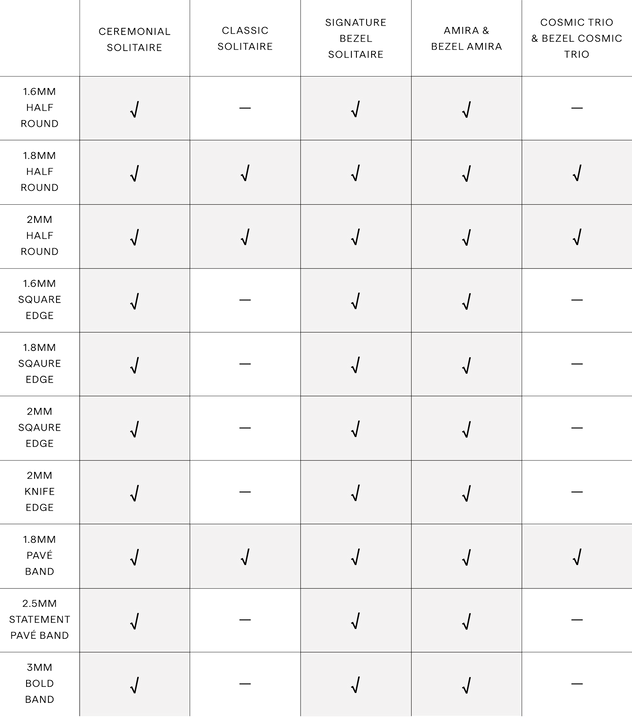Use an existing ring that fits on the ring finger
They are a modification of the traditional round brilliant diamond, but are particularly loved for their elongated nature, which is not only flattering on the hand but also can give the appearance of a larger stone. Modern oval diamonds truly maximise sparkle!
Oval diamonds are our most sought-after shape at Louise Jean, and we have honed our eye for beautifully brilliant ovals over many years. There are many factors to consider when looking for a beautiful oval diamond for your forever piece, that we encourage you to keep in mind or discuss with our expert jewellery consultants.
Oval Diamond Cut
Each diamond shape will have slightly different characteristics that are important to consider, to help ensure you achieve a stone that is both high-quality and, of course, beautiful to look at too! In particular, this relates to the diamond cut - that is, how the diamond cutter has taken a diamond rough and shaped all of the angles and facets of the diamond to create the beautiful stones that we see today.
A diamond’s cut is one of the most important factors that affect how visually beautiful the diamond is to look at. In particular, the depth, angles and faceting of a diamond will determine how well it refracts the light that enters it, and, therefore, how it sparkles!
For all elongated diamond shapes, including an oval, a natural part of this is the presence of a bow-tie effect through the middle of the stone. This is where the angled facets may not absorb or reflect the light most effectively, resulting in dark or dull patches, also known as light leakage. All oval diamonds will have some presence of a bow tie - a critical factor that we consider when sourcing our diamonds is to ensure that the bow-tie is not the first thing that your eye is drawn to. This is not something that is determined by the certificate alone but must be assessed visually.
Unlike round diamonds, fancy shaped diamonds such as oval stones do not have a universal cut grading. While your oval diamond certificate may indicate the Polish or Symmetry of the stone, these can be varied based on a variety of factors and cannot be considered definitive. There are no set rules on how each oval diamond should be cut. This means that there is no magic formula for their proportions - but there are specific characteristics that can contribute to a more beautiful stone.
In this way, the cut grading of an oval diamond on the certificate is not the best indication of how beautiful a diamond may be to look at. It is important to look far beyond the grading on a certificate but to assess the stone itself visually. This allows us to assess the light interaction, sparkle and brilliance, and visual beauty of the stone. While it is good to consider the proportions of an oval diamond’s cut, such as the depth, guidelines for this are always general and are not a set indication of the beauty of a diamond. This is, in essence, a matter of personal preference.
Almost identical diamonds according to their grading certificates. 1.59 D/VVS2 (right) & 1.60ct D/VVS2 (left). Both graded Excellent polish and symmetry, with similar cut proportions. This is an example of how grading is not a determining factor for overall cut performance and beauty, and why visual assessment of a diamond is crucial
Oval Diamond Ratio
The carat of a diamond is a unit of measurement relating to how much it weighs. Carat does not directly correlate with the size, and therefore each diamond will be unique in terms of its dimensions and proportions. These proportions are another factor that determines the visual size and is what is referred to as the diamond’s ratio. The ratio is calculated by dividing the length of the diamond but the width. A low ratio equates to a wider, plumper oval, and a higher ratio reveals a narrower, elongated shape. To achieve a true oval shape - that is, not too long or too wide - we look for diamonds within a particular ratio range. This recommended range is between 1.30 - 1.50, which is illustrated below. Ratio is truly a matter of personal preference but is something you may like to pay attention to when considering a diamond’s dimensions.

Different diamond shapes will also call for different standards of grading characteristics. Some diamonds can hide colour better than others. At Louise Jean, we source oval diamonds between a D and H colour grading as a minimum. This ensures a bright and sparkly stone with no visible colour. There is generally very little visual difference between a D and a G to the untrained eye, but there can be a significant price difference. For this reason, it is always recommended to visually inspect diamonds in various colour gradings before determining your preference.
G-H coloured diamonds can present good value in terms of price, but it is important to note that not all diamonds are created equal, and there can be ‘grades within grades’. This is another area where we look beyond the diamond certificate and carefully consider the visual appearance of the diamond itself. Many of these near-colourless diamonds have undesirable undertones of yellow or grey and are avoided.
Smaller diamonds or those with lower carat weights can hide colour better than larger stones. For this reason, the lower the carat weight, the less a premium diamond colour grading may be necessary. Diamonds above 1.5ct typically expose colour in lower grades more predominantly.
Oval Diamond Clarity
Clarity is an assessment of the natural imperfections - known as inclusions and blemishes - present in a diamond. There are many different types of inclusions, but these can be dark spots or marks that affect your stone's visual beauty.
We will consider a wide range of clarity gradings, from Internally Flawless (IF) to SI1. In some cases, SI2 diamonds can be beautiful and present excellent value. IF and specific SI2 diamonds cannot be visually distinguished when assessed by the eye. The priority is that no matter the clarity grading on paper, we always guarantee that our diamonds will be eye-clean of any inclusion when assessed physically. That is, there will be no imperfections visible unless looking under magnification.
Clarity is often confused for the diamond cut and is mistakenly believed to affect the sparkle. Clarity does not correlate with a diamond’s brilliance, and as long as your diamond is eye-clean, the clarity grading will not affect a diamond's visual beauty.
Oval Diamond Carat
There are no rules for the best diamond size as carat is truly a personal preference and may depend on many factors. This can include the proportions of your own hand, so we recommend trying different diamond sizes to get a feel for what stands out to you. We certainly don’t believe that bigger is always better, but this should be a decision that feels like the right fit for the aesthetic you envision, your lifestyle, and your ideal budget range. At Louise Jean, we exclusively work with oval diamonds starting from 0.6ct or higher. Below is an example of popular carat weights.

